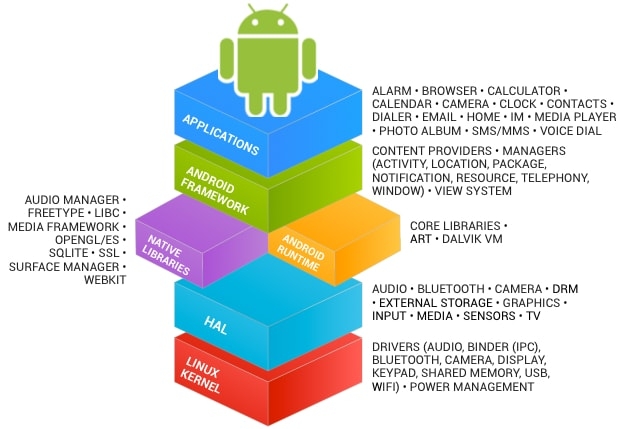What is Android Source Code - All You Need to Know!!
What is Source Code?
The source code is the fundamental component of a program that is created by a programmer. It can be read and easily understood by a human being.
When a programmer types a sequence of C language statements into Windows Notepad, for example, and saves the sequence as a text file, the text file is said to contain the source code.
What does it mean that Android is open Source?
Android is “open” in a variety of ways. For one thing, the Android operating system is based on code from the “Android Open Source Project,” or AOSP. It’s open-source, so people can take that source code and create custom operating systems from it.
MIUI is a custom ROM based on this code, for example. Cyanogen-MOD, Amazon’s Fire OS, used on the Kindle Fire and Fire Phone, is also based on this open-source Android code.

The Android Source Code:
Android is an open source software stack created for a wide array of devices with different form factors. The primary purposes of Android are to create an open software platform available for carriers, OEMs, and developers to make their innovative ideas a reality and to introduce a successful, real-world product that improves the mobile experience for users.
We also wanted to make sure there was no central point of failure, where one industry player could restrict or control the innovations of any other. The result is a full, production-quality consumer product with source code open for customisation and porting.
What are the Purposes of Source Code?
Beyond providing the foundation for software creation, the source code has other important purposes, as well. For example, skilled users who have access to source code can more easily customize software installations, if needed.
Meanwhile, other developers can use the source code to create similar programs for other operating platforms -- a task that would be trickier without the coding instructions.
Access to source code also allows programmers to contribute to their community, either through sharing the code for learning purposes or by recycling portions of it for other applications.
About the Android Open Source Project:
Android is an open source software stack for a wide range of mobile devices and a corresponding open source project led by Google.
This site and the Android Open Source Project (AOSP) repository offer the information and source code you need to create custom variants of the Android stack, port devices, and accessories to the Android platform, and ensure your devices meet compatibility requirements.
We also wanted to make sure there was no central point of failure, where one industry player could restrict or control the innovations of any other. The result is a full, production-quality operating system for consumer products with source code open for customization and porting.
Source Code Licensing:
Source code can be either proprietary or open. Many companies closely guard their source code. Users can use the compiled code, but they cannot see or modify it. Microsoft Office is an example of proprietary source code. Other companies post their code on the internet where it is free to anyone to download.
Apache Open office is an example of open Source Software code:
Interpreted Program Language Code:
Some programming languages such as JavaScript are not compiled into machine code but are interpreted instead. In these cases, the distinction between source code and object code does not apply because there is only one code.
That single code is the source code, and it can be read and copied. In some cases, developers of this code may intentionally encrypt it to prevent viewing. Programming languages that are interpreted include Python, Java, Ruby, Perl, PHP, Postscript, VBScript and many others.
Difference between Open Source Code vs Closed Source:
Generally, the key differentiators between Open and Closed come down to a few factors:
- Cost
- Service
- innovation
- Usability
- Security
What is Android Custom ROM's?
A custom ROM is one that has undergone any modification from being a pure distribution of Android. Google makes the Android source code available for anyone to play around with, and people take this code and alter it for themselves. Whether to add features they come up with, or to redistribute it with fun tweaks and additions.
So a custom ROM can range in definition from some custom code modifications to make Android run better on a device, all the way to changing the home screen, background services, and default software.
Conclusion: Google also releases applications that are not open-source licensed. Gmail, Maps and plenty of the other Google apps that come on our phones aren't part of the AOSP and are developed independently for Android, Chrome, iOS and the web.
Source




